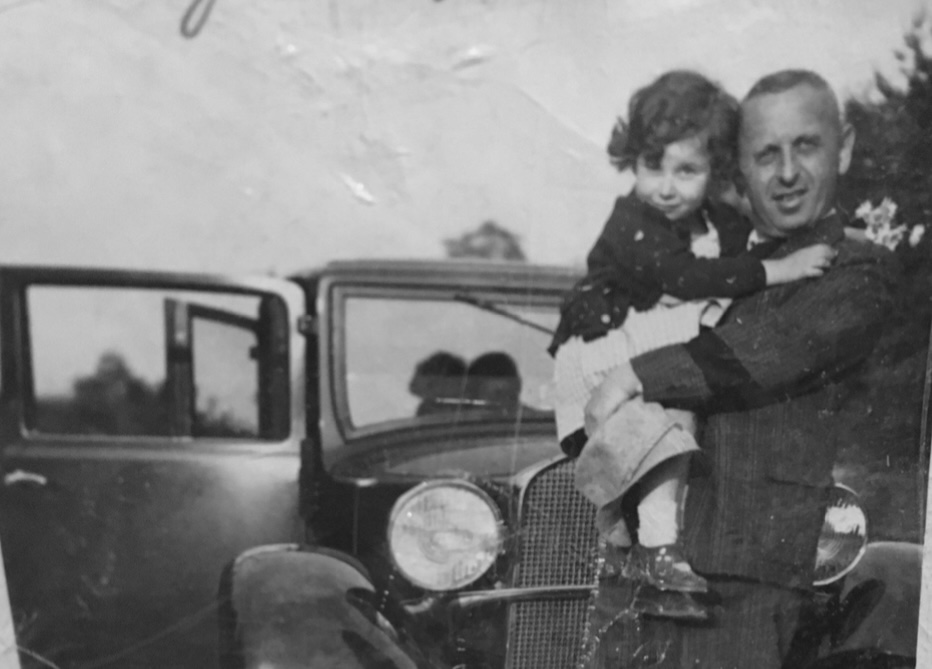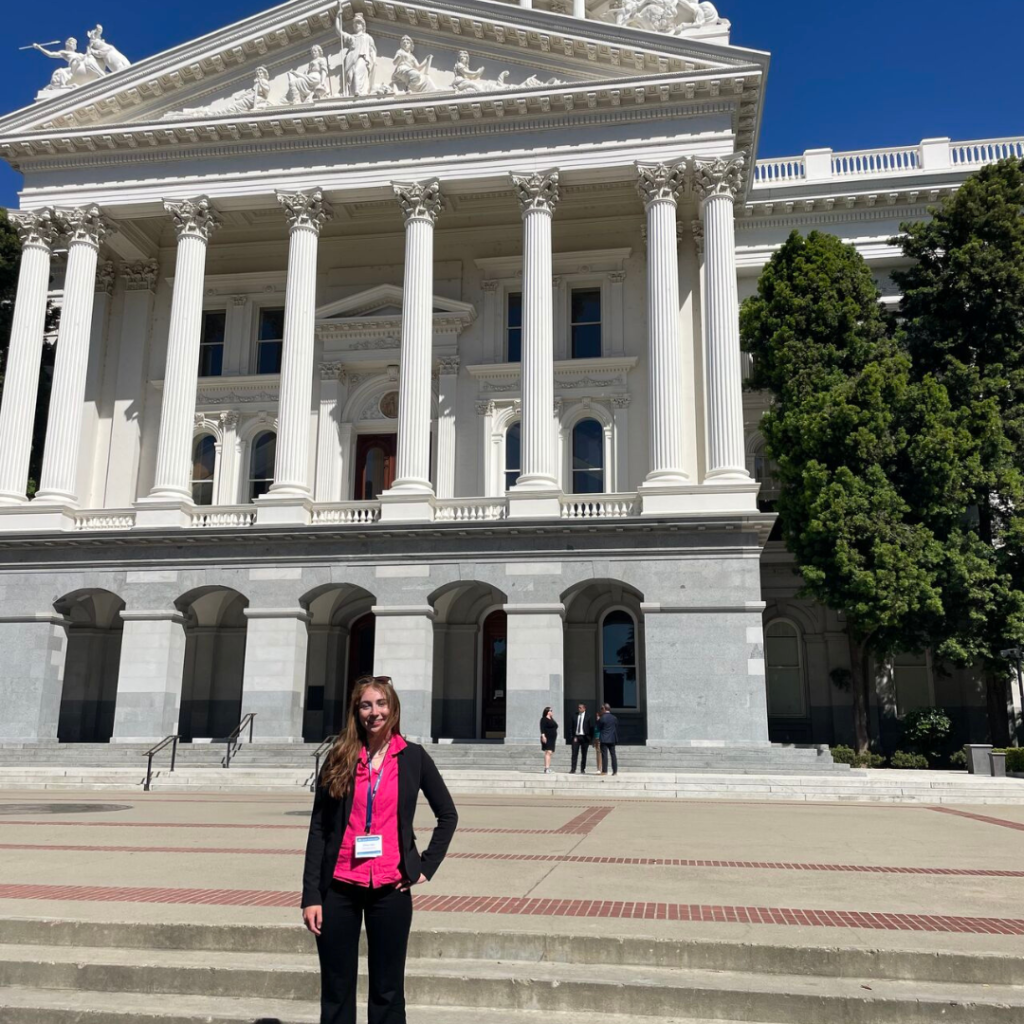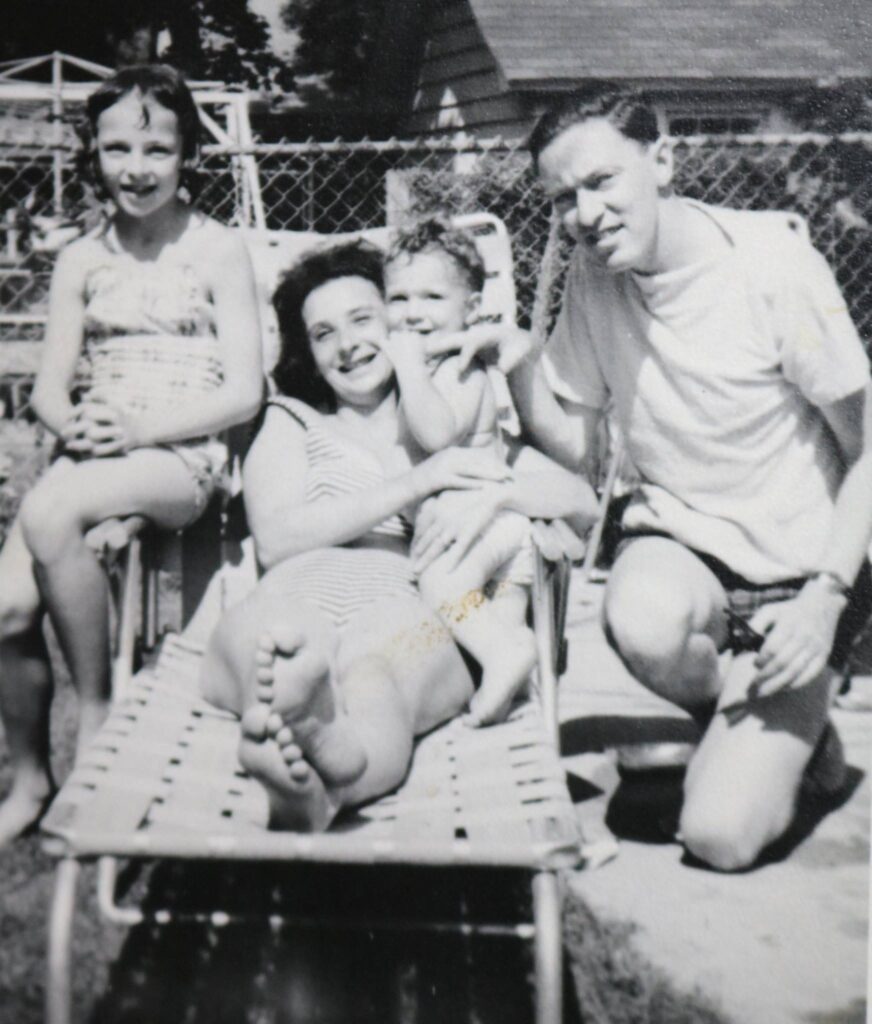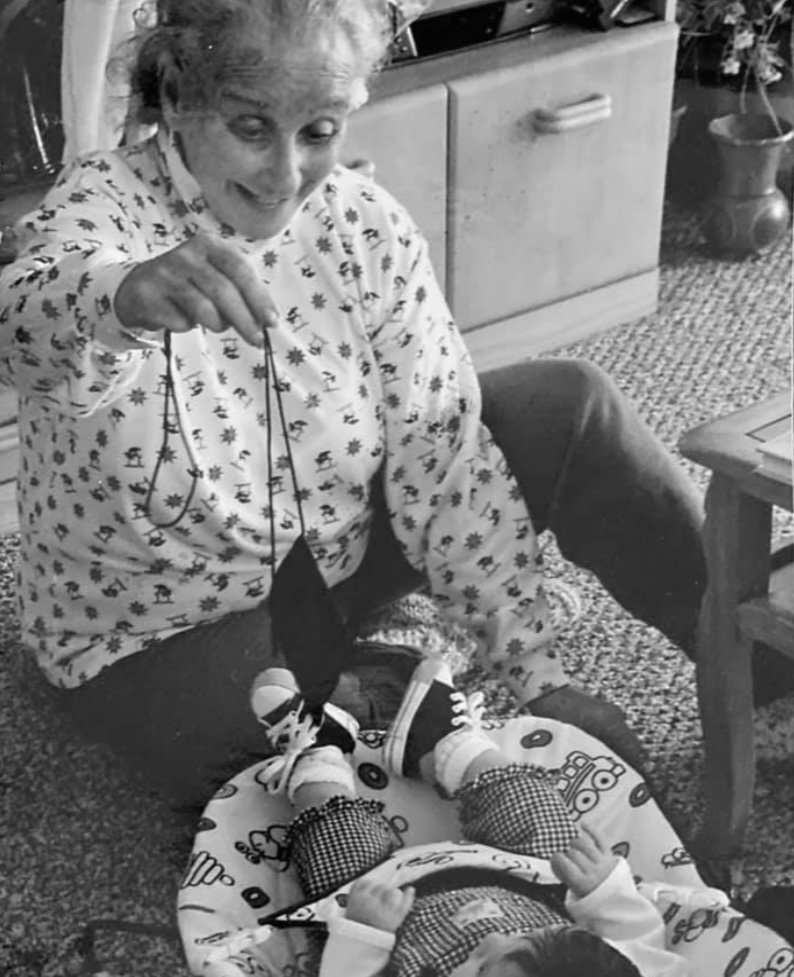Lessons from a Lesson Plan: A Kindertransport Survivor’s Story for the Classroom
by Willow Herz, Manovill University Fellow 2022-23, Senior Pell University Fellow 2024-25
“Why did the Holocaust happen?”
The question came from a thoughtful nine-year-old during a lesson I was teaching, and I didn’t know how to answer.
As a descendant of Holocaust survivors, I know that my own existence is the result of chance, luck, fate, divine intervention—or some combination of them. Many of us who share this legacy understand that our lives are the product of improbable survival. We are living proof that hatred did not win. The Jewish people continue to thrive despite our planned destruction.

Yet not everyone has had the opportunity or the platform to learn about and share their family’s story.
Over the past two years as a University Fellow at the Jewish Family and Children’s Services Holocaust Center, I’ve been supported and inspired in countless ways: studying Holocaust and genocide education, teaching high school students, learning educational pedagogy, witnessing survivor testimony, and participating in events at the California State Capitol, among many other programs.

The culmination of my fellowship has been the creation of a standards-aligned lesson plan centered on my grandmother’s story. This project—my capstone as a Pell University Fellow—has been a highlight of my time at JFCS. It allows me to carry my family’s legacy forward and ensure that their story lives on long after I graduate.
From Fellow to Educator: Creating a Holocaust Lesson Plan for Young Learners
“That night, Ilse woke up to Nazi officers in her bedroom. One of them said, “Don’t worry, we won’t hurt you,” before opening her drawers and leaving. The next morning, on her way to school, Ilse saw broken glass all over the streets. But when she got to school, she saw something worse: her school was on fire. A Nazi officer told her, “Geh nach Hause, Judenkind” (Go home, Jewish child).”
This passage is drawn from The Köenigsgartens & the Kindertransport: Ilse’s Story of Survival—the lesson plan I created, taught, and published during my time as a University Fellow at the JFCS Holocaust Center.
After witnessing Kristallnacht at the age of nine, my Oma escaped to London on the Kindertransport, where she was fostered for several years. As a teenager, she reunited with her parents in La Paz, Bolivia. There, she married my Opa, another German-Jewish refugee, gave birth to my aunt, and eventually immigrated to the United States.

Bringing Ilse’s Story to the Classroom: Teaching Through Personal Connection
This deeply personal connection to the Holocaust is what grounds and propels my commitment to Holocaust education. By centering individual stories—especially those of children who were the same age as today’s students—we move beyond facts and figures. We illuminate the personal identities of victims and affirm their humanity, often obscured by the magnitude of this history.
With a parallel passion for early childhood and elementary education, I set out to design a developmentally appropriate lesson plan tailored for upper elementary students—an age group too often overlooked in Holocaust education. My goal was to fuse my two callings: to teach the Holocaust thoughtfully and accessibly at a stage when empathy and moral imagination are rapidly forming.
Throughout the process, I learned how to present complex history in a way that sparks curiosity, fosters engagement, and leaves a lasting impression. But as my mentor, JFCS Holocaust Center Director Morgan Blum Schneider, wisely advised: you must teach a lesson plan before publishing it—because students are often the best teachers.
I was honored to bring this work into the classroom at Peninsula Sinai Congregation, where I was met with a group of enthusiastic and deeply inquisitive young learners. Watching them engage with Ilse—not as a distant figure in a textbook, but as a girl their own age—was transformative. One moment in particular stands out: a student asked, “Can I take this home to show my mom?” Her desire to share what she learned beyond the classroom was the highest affirmation I could have hoped for.
Piloting the lesson allowed me to strengthen its structure, but more importantly, it offered me the profound privilege of sharing my grandmother’s story. Education is a powerful tool—and to have a platform where I can unite my love of teaching with my devotion to preserving family memory is something I will always cherish. I am deeply grateful to the JFCS Holocaust Center University Fellowship for making this possible.

The phrase “and they lived to tell the tale” is often used, but as a 3G—the grandchild of Holocaust survivors—I’m deeply aware that six million people were denied that very ability. My grandmother is no longer with us, but her strength to survive and to share her story continues to inspire me.
With this project, her story isn’t just preserved; it’s being taught. And not just by me, but by educators across California.
If a picture is worth a thousand words, I hope this lesson plan can reach a thousand students—and leave a lasting impact on each one.
We are now accepting applications for the 2025 – 2026 University Fellowships!
Learn more about the Pell University Fellowship and Manovill University Fellowship here.



